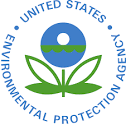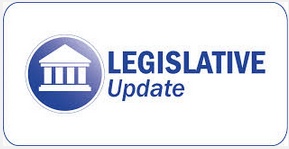House Passes San Francisco Bay Restoration Legislation
 This week, the U.S. House of Representatives passed, by voice vote, the San Francisco Bay Restoration Act (H.R. 1132), sponsored by Representative Jackie Speier (D-CA). The bill aims to improve water quality and protect San Francisco Bay coastal communities from the effects of sea level rise by authorizing $25 million for each of the fiscal years 2020-2024 in USEPA grants. The bill now goes to the Senate for committee consideration.
This week, the U.S. House of Representatives passed, by voice vote, the San Francisco Bay Restoration Act (H.R. 1132), sponsored by Representative Jackie Speier (D-CA). The bill aims to improve water quality and protect San Francisco Bay coastal communities from the effects of sea level rise by authorizing $25 million for each of the fiscal years 2020-2024 in USEPA grants. The bill now goes to the Senate for committee consideration.
Under H.R. 1132, the U.S. Environmental Protection Agency Administrator will compile an annual list of what projects, activities, and studies are prioritized to receive funding. The priority list may include activities, projects, or studies, including restoration projects and habitat improvement for fish, waterfowl, and wildlife, that advance the goals and objectives of approved plans for water quality improvement, wetland, riverine, and estuary restoration and protection, nearshore and endangered species recovery, and adaptation to climate change. The list will also include information on the identity of each entity receiving assistance and a description of the communities that will be served by the activity or project.
Grants may be awarded to state and local agencies, special districts, public and nonprofit agencies, institutions, and organizations. Funding eligibility is restricted to communities within the San Francisco Bay area.
USEPA Continues to Seek Information on Nutrient Removal through Secondary Treatment
 On October 22, 2019, USEPA launched a survey to collect basic information on levels and types of treatment in place and wastewater characteristics at the more than 18,000 Publicly Owned Treatment Works (POTWs) nationwide.
On October 22, 2019, USEPA launched a survey to collect basic information on levels and types of treatment in place and wastewater characteristics at the more than 18,000 Publicly Owned Treatment Works (POTWs) nationwide.
This is the first phase of the National Study of Nutrient Removal and Secondary Technologies. The study’s goal is to document nutrient reductions obtained from “optimizing” operations and maintenance practices, rather than implementing advanced and often costly treatment options. According to USEPA a number of POTWs have demonstrated significant nutrient reductions using this method, and this study will assist with an evaluation of whether these site-specific case studies are nationally applicable.
USEPA currently has survey responses from 49 of 50 states representing a variety of types and sizes of POTWs, but additional responses would help better define the full population of wastewater treatment plants in the U.S. and their treatment characteristics. To complete the electronic survey, you can register online here: POTW Nutrient Survey
This study will also provide national information needed by states and treatment plants to enable a clearer understanding of the tradeoffs between point and non-point source controls on site-specific waterbodies impaired by nutrients. Watershed planning and innovative permitting approaches that better utilize trading of nutrient loads between non-point sources and point sources require a solid understanding of each source’s nutrient loads.
USEPA intends to make the results of this voluntary survey available as an online searchable tool of existing technologies and operational strategies for nutrient removal that POTWS are employing. Other POTWs may choose to adopt such strategies to save money. All the data collected during this phase of the study is integral to subsequent phases of the study where USEPA will attempt to more accurately document the level of nutrient removals achieved through operational modifications to secondary treatment facilities.
The most recent responses by state can be found here: Nutrient Survey Response Rate
If you have any questions about this questionnaire, are unable to register your POTW, or need other assistance, please contact the USEPA POTW Screener Questionnaire Helpline at 703-633-1696 or POTW_Help@erg.com.




 @CASA_CleanWater
@CASA_CleanWater